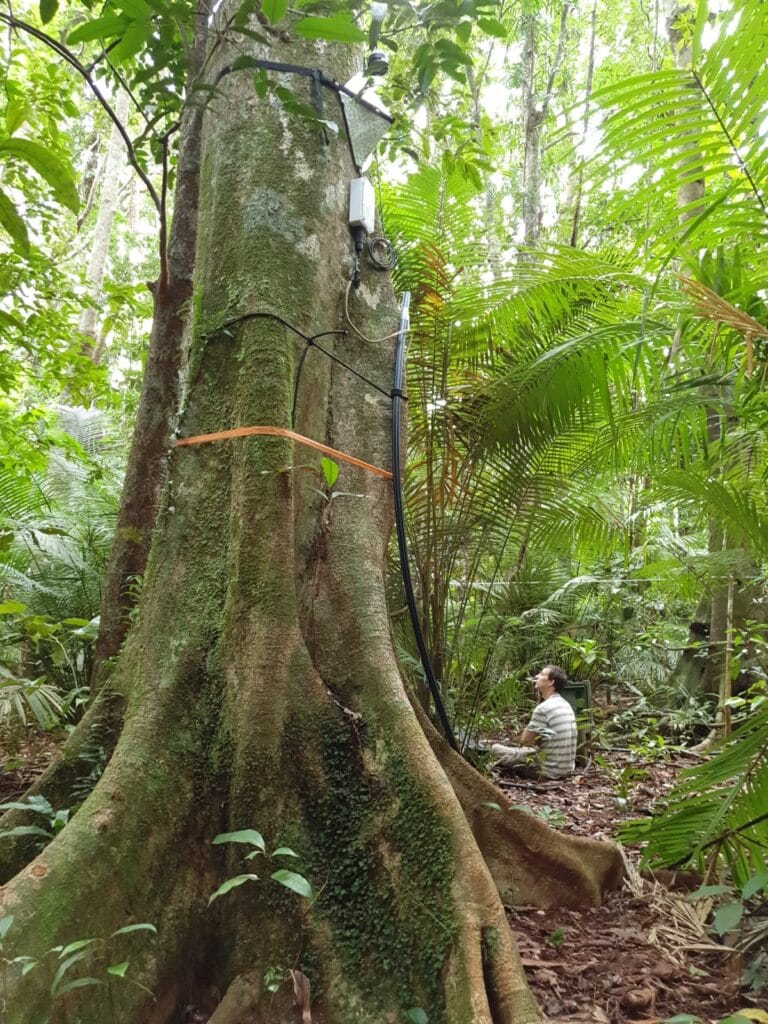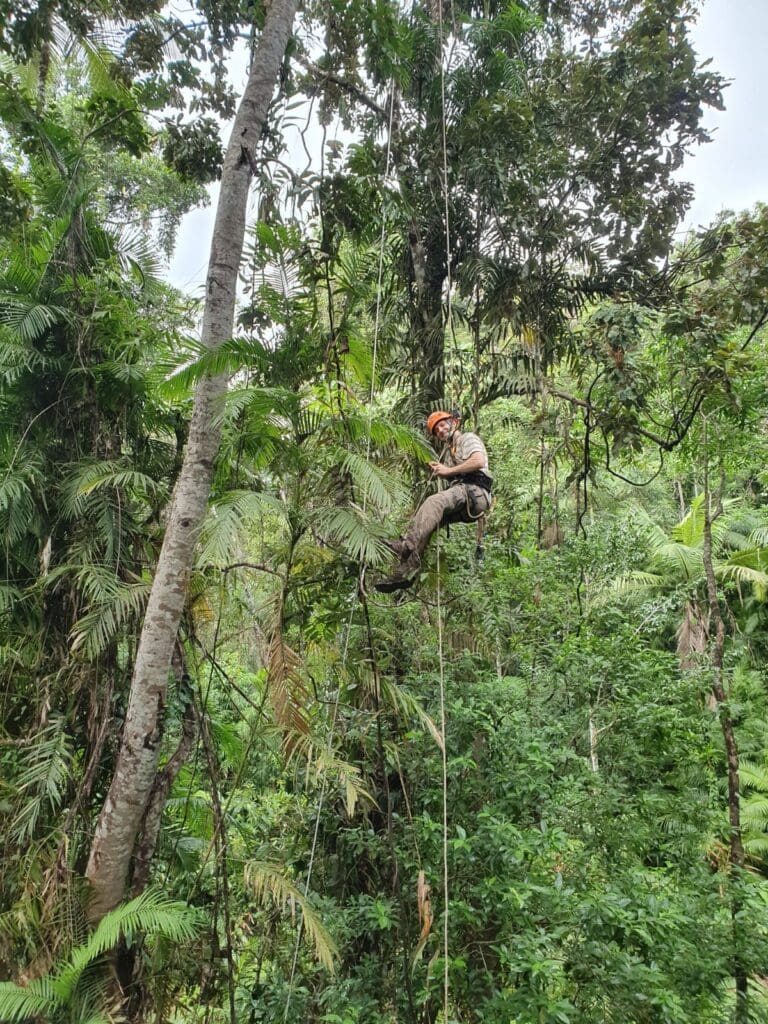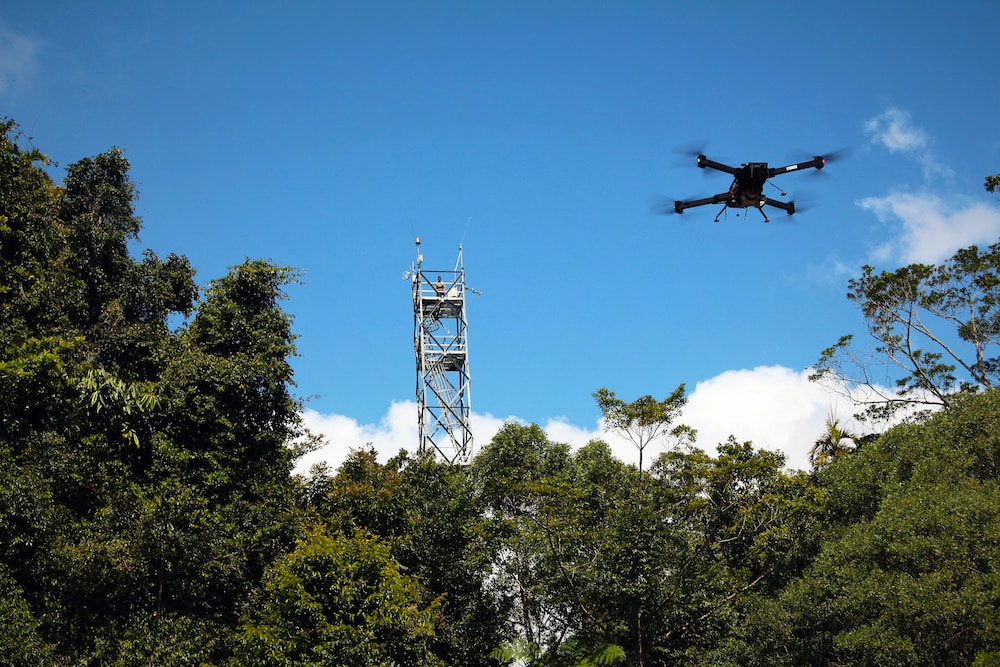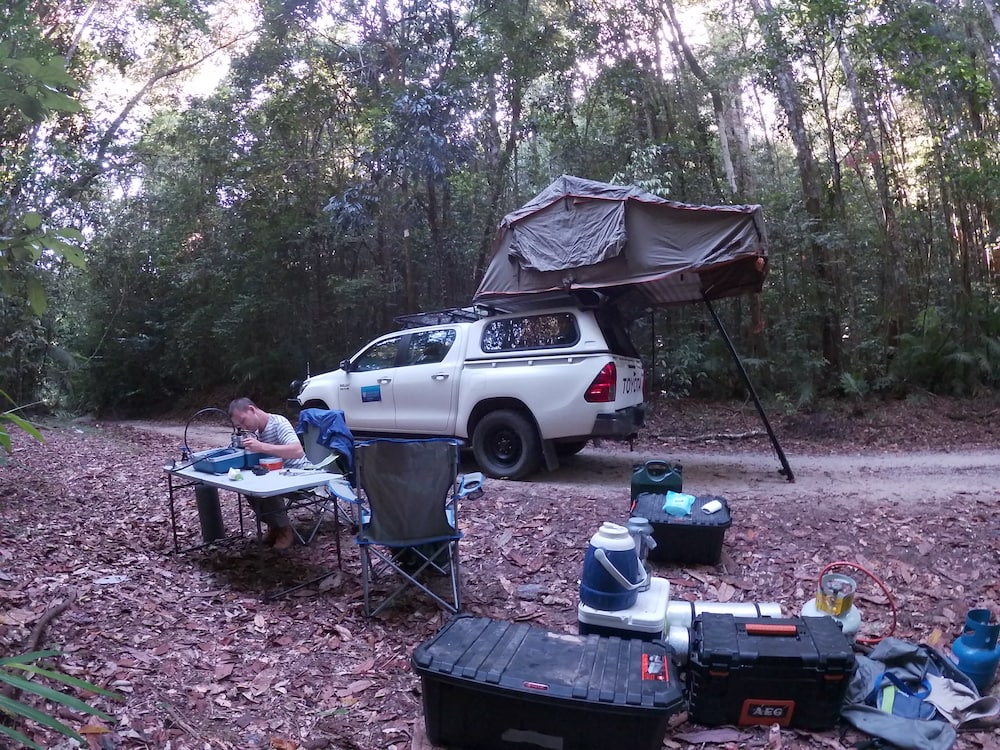Researchers using TERN’s forest monitoring sites have produced a more accurate way of coupling the forest canopy and atmosphere components in the models that simulate ecosystem shifts in response to climate change. The collaborative international research also reports that certain aspects of forest function may be influenced more by humidity than amounts of rain.
At two climatically different tropical forest sites in the TERN monitoring network, researchers have used an innovative method to improve measurements of soil, tree and forest hydraulic conductance.
The study, just published in a leading peer-reviewed journal, offers a more accurate way of coupling the forest canopy and atmosphere components in the models that simulate ecosystem shifts in response to climate change.
Coupled models—in this case where the forest and atmosphere models exchange data with each other—can evolve as a whole and produce more accurate representations of an ecosystem and better predictions of how it’s likely to change in the future.
“The hydraulic conductance of water by trees, from soil up to the leaf surface, determines canopy-atmosphere coupling in vegetation models that simulate large-scale shifts in response to climate change, but this conductance is often derived from ex-situ measurements of twigs and soil samples.
We used two TERN ecosystem observatory sites, to test our novel method to derive in-situ measurements of soil, whole-tree and stand-level conductance. We found a non-arbitrary and more representative way to characterise the partitioning between soil and plant hydraulic pathway.
Our data show that whole-tree conductance did not differ among species but was different between sites. This is likely due to contrasting atmospheric moisture levels, or humidity, rather than the amount of rainfall at the sites.
We were also able to robustly scale tree hydraulic conductance to the stand-level using tree circumference measurements.”
Oliver Binks, Australian National University

The collaborative research brought together local experts based near TERN sites in Far North Queensland, with forest scientists from southern Australia and experts from the United Kingdom, Brazil and Spain.
They installed sensors on trees and in soil pits at the two TERN sites (Robson Creek Rainforest SuperSite and the Daintree Discovery Centre site at Cow Bay, part of the Daintree Rainforest SuperSite) to collect data on sap flux and soil water potential.

TERN welcomes co-use of its research sites from around the globe
Oliver’s collaborative research brought together local experts based near the TERN sites in Far North Queensland, with forest scientists from southern Australia and experts from the United Kingdom, Brazil and Spain.
The team installed sensors on trees and in soil pits at the two TERN sites (Robson Creek Rainforest SuperSite and the Daintree Discovery Centre site at Cow Bay, part of the Daintree Rainforest SuperSite) to collect data on sap flux and soil water potential.
They were also able to leverage the established TERN research infrastructure and local expertise.
“The advantage of using the TERN field sites was long-term inventory data, the high-quality meteorological data and, of course, the access to a power supply.
This last point was very important, and in fact, we ended up renewing the solar array, increasing the battery capacity and the voltage output at Robson Creek in order to cope with the demand of supplying power through over a kilometre of cable.
The Cow Bay site is shared with the Daintree Discovery Centre meaning that, in addition to working next to animatronic dinosaurs, the supply of power, coffee and cake were ample!
The expertise and enthusiasm of locally based staff at both sites, including Mike Liddell, Abi Ralph and Peter Eldred, were key to enabling this research work. We also benefitted hugely from the expertise of Matt Bradford, Lucas Cernusak and Mike Liddell in setting up each of the sites and accessing all the past data from TERN.
In a sentence, we used these sites because of the combination of existing data, research infrastructure, and the help and expertise of the locals.”
Oliver Binks, Australian National University

Researchers leveraged the established TERN research infrastructure and local expertise at TERN’s Robson Creek Rainforest SuperSite in Far North Queensland
Researchers called to action around the global
Oliver and his co-authors encourage long-term ecological researchers (LTER) around the globe with access to sap flux and leaf water potential data to join in a community-wide effort to characterise how stand-scale conductance varies across space and time.
We look forward to hearing about future studies in this space.







